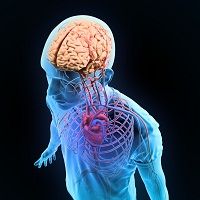Changing Brain Chemistry May Reduce Pain
The pain threshold of arthritis patients can increase after their brain chemistry is altered.

The pain threshold of arthritis patients can increase after their brain chemistry is altered, according to findings published in the journal Pain.
Researchers from the University of Manchester observed 17 patients with arthritis pain and nine healthy controls who underwent whole brain positron emission tomography scanning in order to find evidence for the relationship between chronic pain and opioid receptors in brains. The researchers noted that it was not fully understood how the opioid system adapts to chronic pain states, which is why the scans were necessary. The researchers then applied heat to the patients’ skin using a laser stimulator to track the spread of opioid receptors.
The researchers found that endorphins act as natural painkillers but the opioid receptors can increase over time to reduce and help patients cope with long term and severe pain. The researchers believe that increasing the opioid receptors in the brain is a brain function adapted to respond to chronic pain. This allows patients to cope with the pain more easily, they added.
“As far as we are aware, this is the first time that these changes have been associated with increased resilience to pain and shown to be adaptive,” lead investigator Dr. Christopher Brown explained in a press release. “Although the mechanisms of these adaptive changes are unknown, if we can understand how we can enhance them, we may find ways of naturally increasing resilience to pain without the side effects associated with many pain killing drugs.”
The patients with arthritis had less opioid receptors in their brains overall when compared to healthy controls, the researchers said. Specifically, the arthritis patients additionally had less overall opioid receptors within the striatum; this finding is consistent with the greater endogenous opioid binding expected from chronic pain patients, they said.
“This is very exciting because it changes the way we think about chronic pain,” study author Professor Anthony Jones continued in the statement. “There is generally a rather negative and fatalistic view of chronic pain. This study shows that although the group as a whole are more physiologically vulnerable, the whole pain system is very flexible and that individuals can adaptively up-regulate their resilience to pain. It may be that some simple interventions can further enhance this natural process, and designing smart molecules or simple non drug interventions to do a similar thing is potentially attractive.”